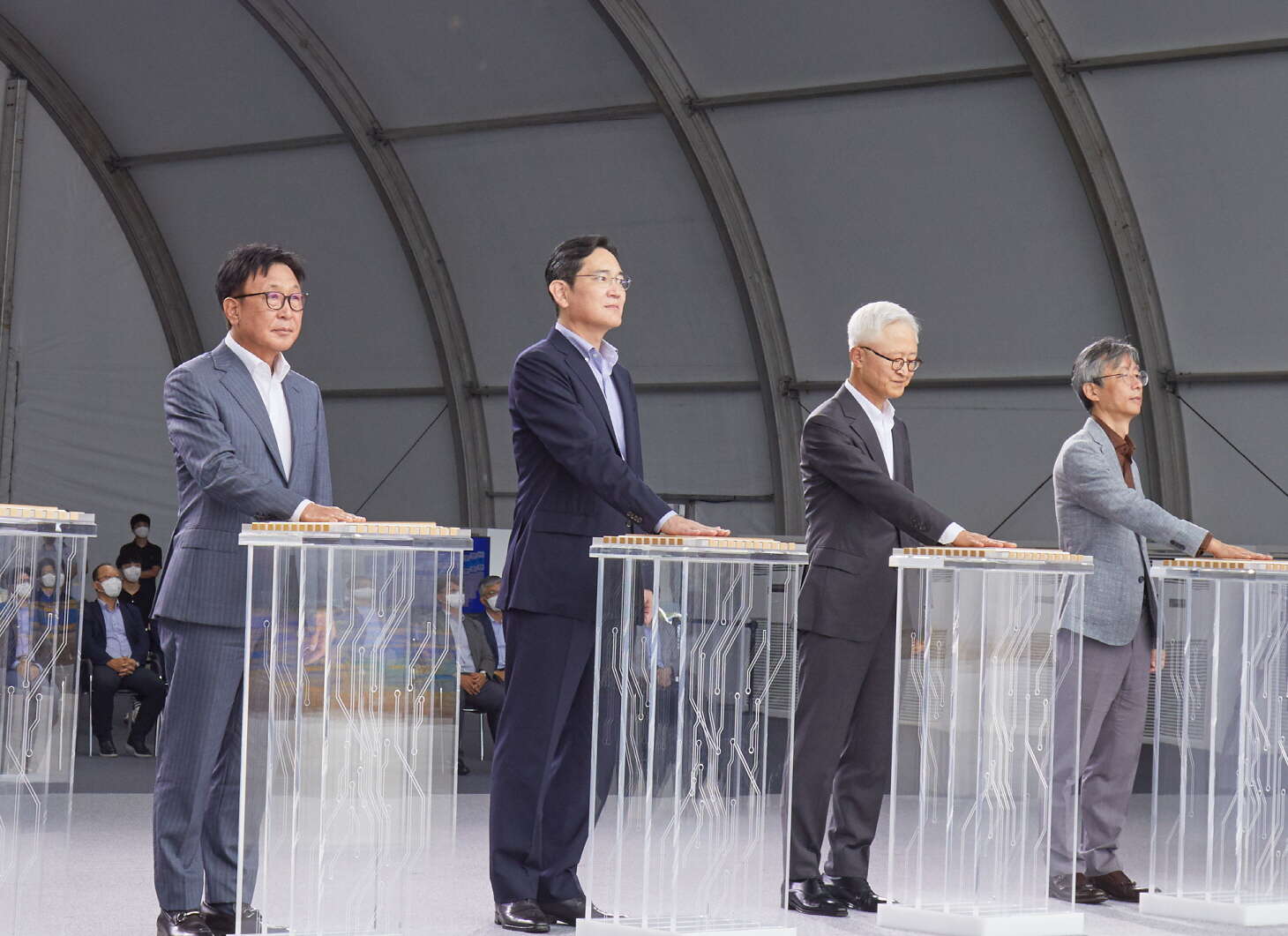
South Korea’s Samsung today pledged to invest $15bn in semiconductor development over the next six years as it broke ground on a new chip R&D centre. But the bold commitment comes amid widespread fears the industry is about to experience a major downturn after two years of rapid growth which led to the global chip shortage.

The 100,000-square foot facility at its campus in Giheung, South Korea, will “lead advanced research on next-generation devices and processes for memory and system semiconductors, as well as development of innovative new technologies based on a long-term roadmap,” a Samsung statement said. The company will invest Won20trn ($15m) in the facility by 2028.
By building the R&D centre, Samsung says it is “seeking to overcome the limits of semiconductor scaling and solidify its competitive edge in semiconductor technology”.
“Our new state-of-the-art R&D complex will become a hub for innovation where the best research talent from around the world can come and grow together,” said Samsung Electronics president and CEO Kye Hyun Kyung. “We expect this new beginning will lay the foundation for sustainable growth of our semiconductor business.”
The investment is part of a $451bn semiconductor investment plan announced by the South Korean government last year, but it comes at a time when many companies in the chip industry are facing an uncertain future.
Is the chip industry heading for a downturn?
Samsung is one of only two companies, along with Taiwan’s TSMC, that has the capability to make leading-edge semiconductors used in advanced devices. In June it claimed a victory over TSMC by becoming the first company to commercialise 3nm chips, the smallest, most efficient production process developed so far.
This duopoly has seen both companies cash in on booming demand for electronics during and following the Covid-19 pandemic and lead to the chip shortage which affected many sectors, particularly the automotive industry.
However, the shortage appears to be at an end, with high inflation rates and fears of recession in major markets around the world meaning demand is slowing at a time when manufacturers have been building out their inventory.
And while the demand for semiconductors is historically highly cyclical, the speed of the recent downturn has taken businesses by surprise. Last month, US chipmaker Intel reported quarterly revenue $2.6bn short of expectation and 17% down on the previous year. CEO Pat Gelsinger blamed challenging economic conditions and said a “once in 10 years” adjustment to inventories was being made by its customers in response to falling demand. Another US chipmaker, Nvidia, saw revenue fall 44% from the previous quarter as demand for its graphical processing units dipped.
Samsung’s revenue has fared slightly better, but it is starting to feel the affects of the downturn, with its most recent earnings report, released in July, showing income growing 21% year-on-year, to $59bn, but dropping slightly quarter-on-quarter.
With this in mind, Samsung, TSMC and Intel may look to rein in previously announced multi-billion dollar factory plans. Speaking to Tech Monitor last month, Gartner analyst Alan Priestley said the chipmakers may slow or delay building projects until the economic outlook is brighter. “The world has changed in the last six months, and things are not as rosy as they had appeared,” Priestley said. “The wider economic situation is changing the dynamics of the market.”
Chip 4 and the geopolitical pressures on the semiconductor industry
Meanwhile, the demand downturn is inconvenient for the US government, which has just approved the Chips and Science Act, which will see $280bn invested in America’s semiconductor production capabilities.
Governments around the world are keen to reduce their reliance on Asian chip producers, particularly in light of China’s long-stated aim of regaining control of Taiwan, where much of TSMC’s production takes place.
To try and strengthen international cooperation on chip supply, the US plans to convene a new working group, Chip 4, involving Japan, South Korea, Taiwan and the US. The group will look to build links between the major chip-producing nations at the expense of China, as trade tensions between Washington and Beijing continue.
China has limited access to leading-edge semiconductor production technology from abroad as part of US export rules, but is rapidly building its own capabilities. In July, leading Chinese chipmaker SMIC surprisingly revealed it can make 7nm chips, meaning it is only two technology nodes behind Samsung and TSMC.
Details of the first Chip 4 meeting have yet to be revealed. South Korean Foreign Minister Park Jin said yesterday his country would be attending, but in a statement to Reuters, Taiwan’s economy ministry said it had not been invited to a meeting. “In past exchanges and dialogue between Taiwan and the United States, the United States did propose similar ideas, but there was no specific content at the time,” the statement said.
Tech Monitor is hosting a roundtable in association with Intel vPro on how to integrate security into operations. For more information, visit NSMG.live.
Read more: €43bn European Chips Act may lack funding to succeed






